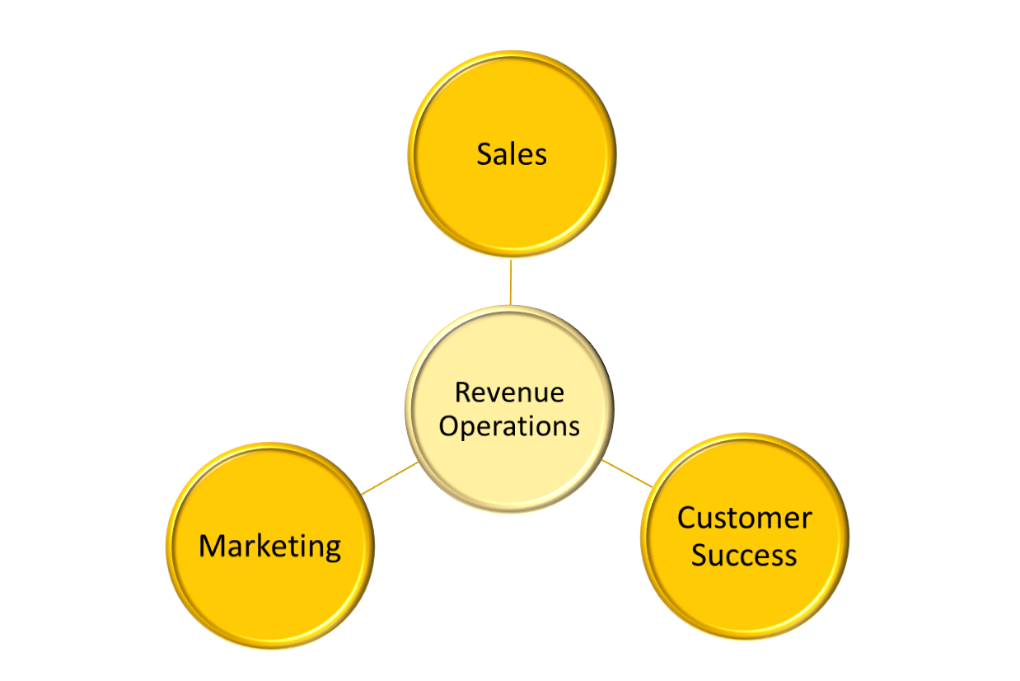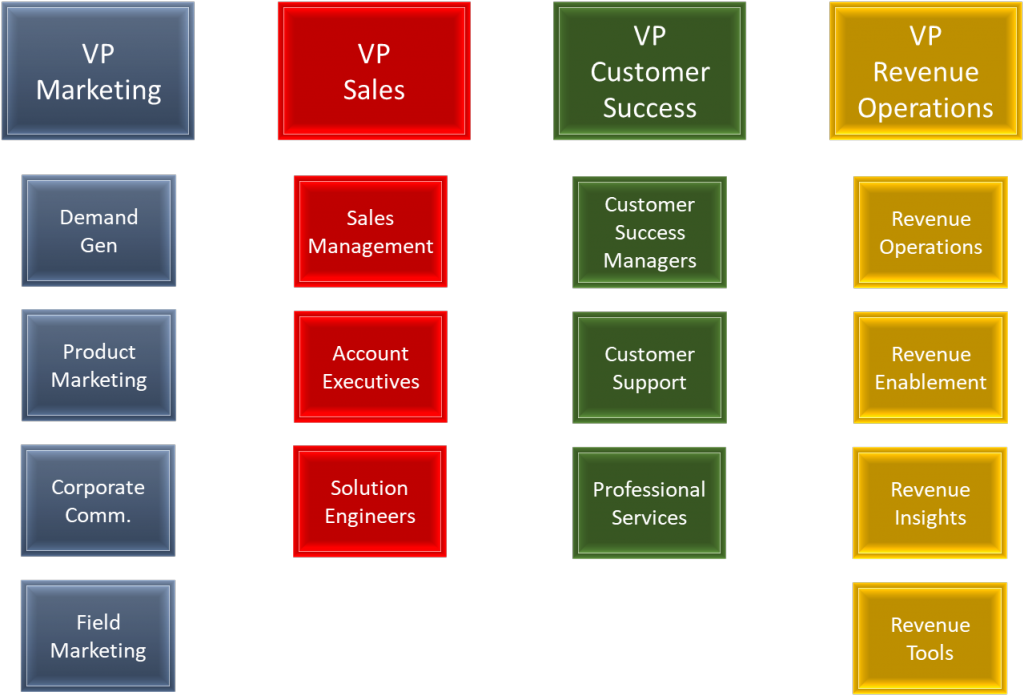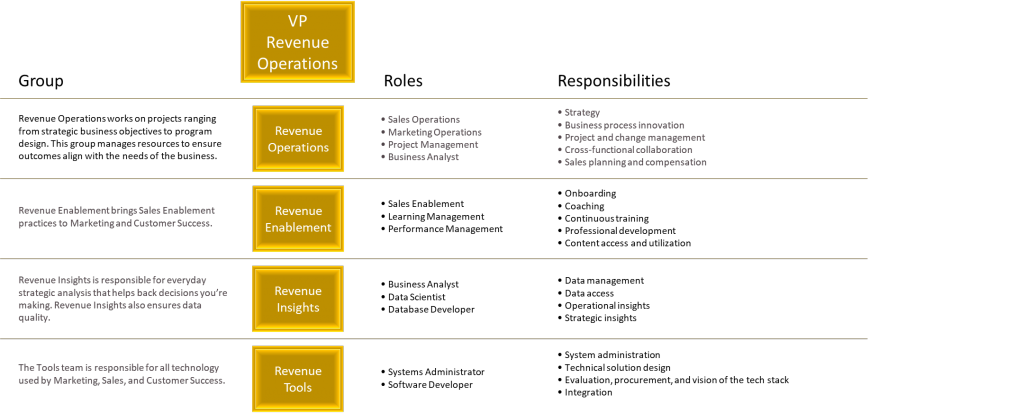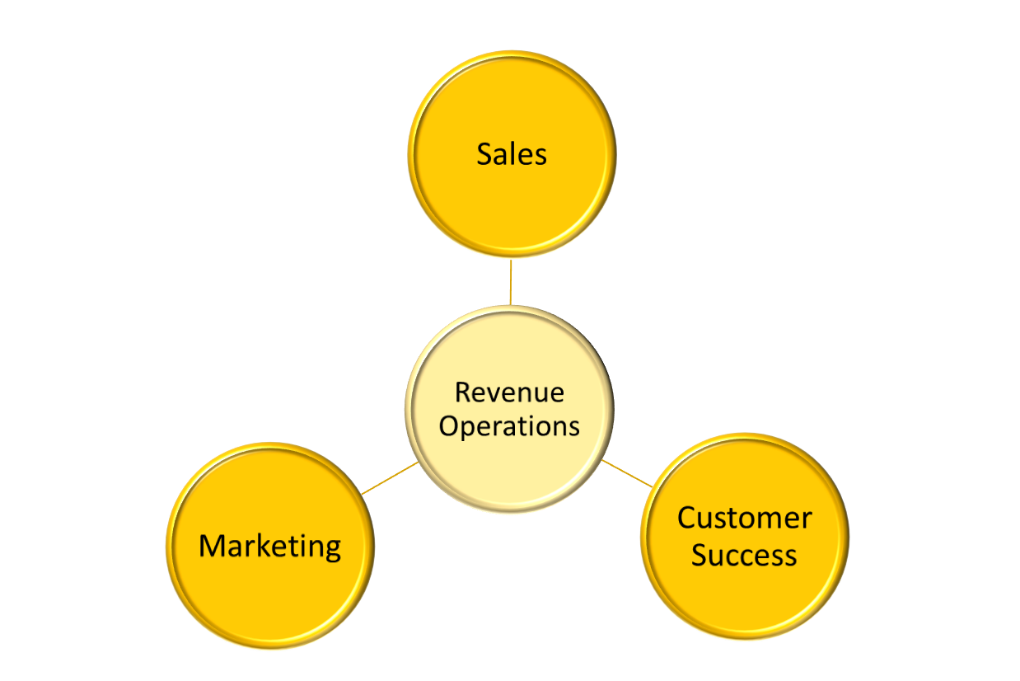Knowing your company needs a Revenue Operations group and a Revenue Enablement function to hit your number is not enough. How does Revenue Operations impact your other functions – namely, Sales Enablement, Marketing Ops, and Sales Ops? Read on for answers.
Revenue Enablement sits under the Revenue Operations group and extends the principles of Sales Enablement to every inch of the organization. This structure helps revenue-leading companies drive holistic strategy, improve customer hand-offs, and optimize customer experience.
However, knowing your company needs a Revenue Operations group and a Revenue Enablement function to hit your number is not enough. What now? Where does Revenue Operations fit in your org chart? Who leads Revenue Operations? How does Revenue Operations impact your other functions – namely, Sales Enablement, Marketing Ops, and Sales Ops? Read on for answers.
If you want a head-start dividing up responsibilities within the Revenue Enablement function, download our Revenue Enablement Tool .

Revenue Enablement within the Revenue Operations organizational model is the emerging best practice that tomorrow’s market leaders are implementing today.
Where Does Revenue Operations Fit in Your Org Chart?
Technology has completely altered the buyer journey. In some instances, by the time a prospect is interacting with Sales, 75% of the buyer journey has been completed.
Revenue Operations is the link that connects Marketing, Sales, and Customer Success across the customer lifecycle. Through this connection, internal silos are destroyed and alignment, focus, and simplicity is increased. Revenue Operations drives efficiency across the customer lifecycle and keeps all teams focused on revenue growth.
As a result, Revenue Operations should be on par with the rest of your organization. Revenue Operations is a parallel group to Sales, Marketing, and Customer Success. The VP Revenue Operations is a peer to your VP Sales, VP Marketing, and VP Customer Success.

Who Leads Revenue Operations?
It depends. The answer hinges on what type of business you run. If your business model is transactional, you’re probably fine with the CSO/CMO standard. In the transactional model, there are big gaps between customer touchpoints. Centralizing these few touchpoints under a CRO is not value-add. That equation changes in the subscription model. This business model depends on increasing renewal rates and reducing churn. The touchpoints are blended. It makes sense to centralize the multiple, contiguous touchpoints under a CRO.
At SBI, we continue to see the CRO role emerge to act as the top of the pyramid for Marketing, Sales, Customer Success, and Revenue Operations. You should expect buyer patterns to continue to test internal collaboration capabilities, resulting in a pull for the CRO role.
How Does Revenue Operations Impact My Other Groups?
At a high level, Revenue Operations will drive growth via operational efficiency across the customer lifecycle. By freeing up Marketing, Sales, and Customer Success to focus on their key objectives and goals, Revenue Operations allows the organization to increase specialization, while also increasing collaboration. A simple way to think about this is any activity that is not customer-centric will be stripped from Marketing, Sales, and Customer Success – and given to Revenue Operations.
Let’s take a closer look at three major impacts Revenue Operations has on the responsibilities of your other functions:
- Sales Operations and Marketing Operations roll into Revenue Operations. No longer are your Sales and Marketing teams forced to take their eyes off the customer.
- Sales Enablement is expanded to cover Sales, Marketing, and Customer Success. The silos between Sales, Marketing, and Customer success are destroyed. Everyone is on the same page.
- Analysis duties are assigned to one group. Your Sales, Marketing, and Customer Success teams will not be subject to time-consuming, ad-hoc data requests. Reporting will match up cross-commercially.

If you want a head-start dividing up responsibilities within the Revenue Enablement function, download our Revenue Enablement Tool.

